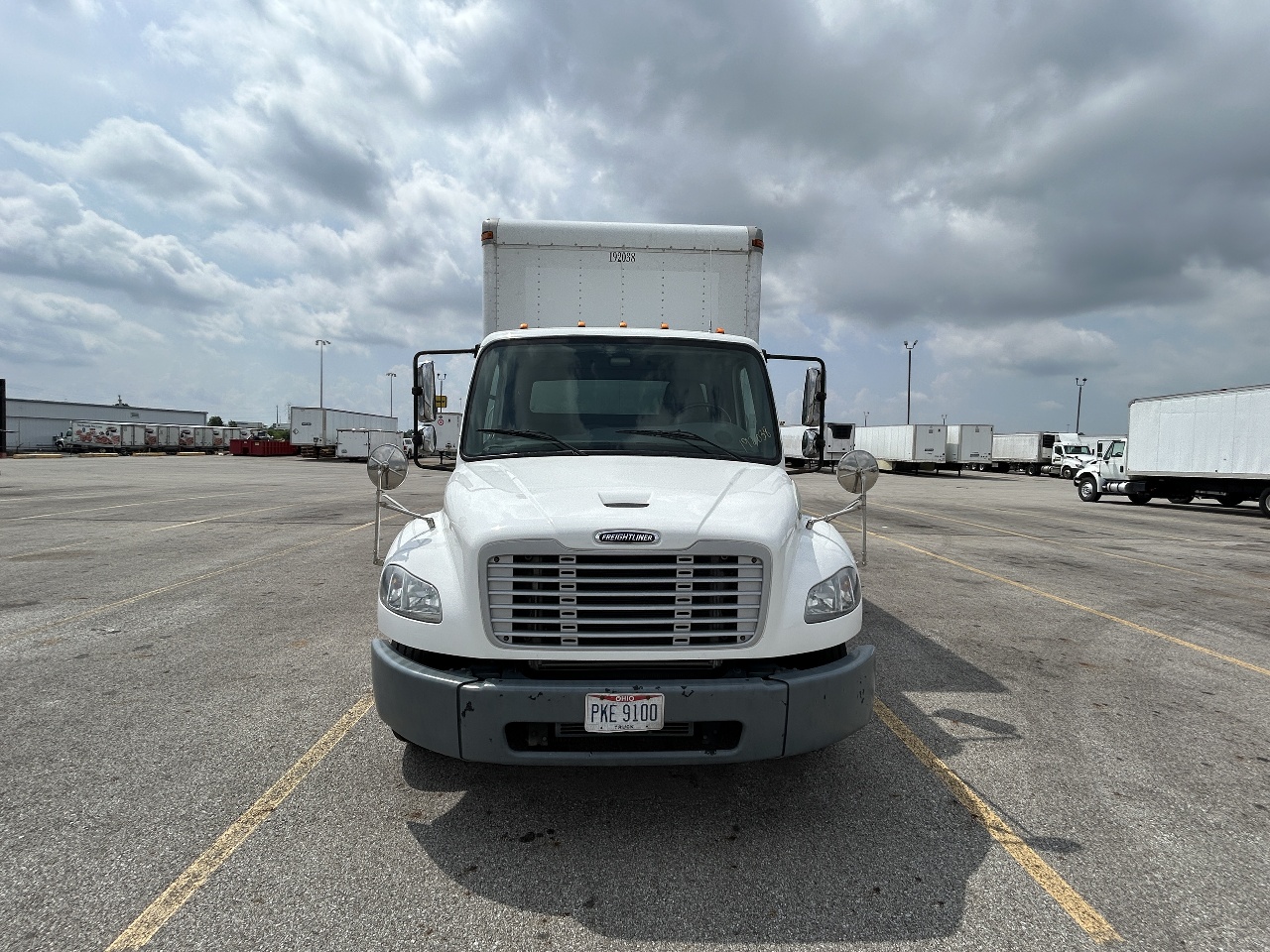

How to Avoid a 34-Hour Reset: Expert Tips for Truck Drivers
If you’re a professional truck driver, time is your greatest asset. Every mile counts and every hour on the road contributes to your paycheck. So when you first hear about the 34-hour reset rule, it might sound like a frustrating delay in your schedule. You’re not alone, many drivers operating box trucks and other commercial vehicles across Texas feel the same way.
But here’s the truth: the 34-hour reset isn’t just a legal requirement under the Federal Motor Carrier Safety Administration (FMCSA), it’s a key factor in keeping you, your cargo and other motorists safe. The reset ensures that commercial drivers get enough rest to avoid fatigue-related incidents, which are one of the leading causes of trucking accidents nationwide.
At RK Truck Sales, a trusted used box truck dealer in Dallas, we work closely with drivers who depend on their trucks for their livelihood. Whether you drive a 26-ft box truck, an International sleeper truck or a Freightliner with liftgate, understanding how to manage your hours can help you stay compliant, avoid costly downtime and keep your wheels turning.
What is the 34-Hour Reset Rule?
The 34-hour reset is a built-in recovery period within the FMCSA Hours of Service (HOS) regulations. It requires most commercial truck drivers to take at least 34 consecutive hours off duty after reaching their weekly limit of driving and on-duty hours.
There are two common driving cycles recognized by the FMCSA:
- 60-hour / 7-day cycle: Drivers can be on duty for a maximum of 60 hours over any 7 consecutive days.
- 70-hour / 8-day cycle: Drivers can be on duty for a maximum of 70 hours over any 8 consecutive days.
Once you hit your limit, you can’t legally continue driving until you’ve completed a 34-hour off-duty reset period. This rule applies whether you drive cross-country in a sleeper cab or operate shorter routes around Dallas in a box truck.
The goal isn’t just regulatory compliance, it’s about reducing fatigue, increasing safety and improving focus behind the wheel.
Why the 34-Hour Reset Matters for Drivers
It’s easy to view the reset as downtime that cuts into your earning potential. However, the reset serves several important purposes that benefit both you and your fleet:
- Improves focus and reduces fatigue-related accidents.
Long hours can impair decision-making and reaction time. The reset ensures you’re rested and alert. - Keep your driving record clean.
Violating Hours of Service rules can result in penalties, fines and a poor compliance score with the FMCSA. - Protect your employer or fleet owner.
Fleets face major consequences for non-compliance, including audits and suspended operations. - Prevents mechanical mistakes.
When you’re tired, errors in handling, loading or braking become more likely putting your truck and others at risk.
At RK Truck Sales, we see professional drivers as more than operators, you’re business owners managing time, compliance and profit margins. Understanding how to work with the reset rule, not against it, can help maximize your driving hours and your income.
How to Avoid a 34-Hour Reset: Smart Scheduling and Tracking
You can legally avoid a 34-hour reset by managing your on-duty hours efficiently throughout the week. The key is pacing your schedule so you don’t hit the 60- or 70-hour limit.
For example, on an 8-day cycle, try keeping your total on-duty time around 8 hours and 45 minutes per day. That leaves a small buffer while ensuring you stay under the 70-hour cap.
Here are practical steps that many successful drivers use:
- Only log on duty when necessary.
Every minute counts. If you’re taking a meal break, doing paperwork or offloading personal items, switch to “off duty.” - Monitor your cycle daily.
On an 8-day schedule, hours worked on day one become available again on day nine. Knowing this rolling cycle can help you plan deliveries more efficiently. - Schedule personal errands outside work hours.
Filling up personal fuel or getting meals during your on-duty window can waste valuable logged time. - Split team driving carefully.
Team drivers should coordinate schedules so one rests while the other drives, avoiding both hitting the limit early. - Use short-haul exemptions when applicable.
Drivers operating within 100 or 150 air miles of their home terminal may qualify for special rules that reduce the need for a 34-hour reset.
Small adjustments like these can help you stay productive and compliant, avoiding the forced downtime that comes with a full reset.
How to Track and Manage Your 34-Hour Reset with ELDs
The Electronic Logging Device (ELD) mandate changed the game for modern drivers. These devices automatically record your driving time, on-duty status, rest breaks and off-duty periods, ensuring accuracy and transparency.
The Four Key ELD Status Categories
- Driving: When the truck is moving on public roads.
- On Duty: When performing job-related tasks like inspections, maintenance or loading.
- Resting (Sleeper Berth): Time spent resting in your sleeper cab, which can count as part of your daily rest period.
- Off Duty: Any time not spent performing work activities, such as personal travel or leisure.
Properly using your ELD helps you:
- Avoid unintentional HOS violations.
- Understand when to rest or stop driving.
- Plan future trips to stay under your limit.
- Share accurate logs with fleet managers or inspectors.
If you’re operating box trucks for local deliveries in Dallas, using your ELD correctly can make the difference between steady workdays and losing two days to an avoidable reset.
How ELDs Help You Avoid the Reset
Modern ELD systems provide real-time data that shows how many hours you’ve worked and how many remain before reaching your limit. This gives you full visibility of your schedule.
For example:
- If your ELD shows only three hours remaining in your cycle, you can adjust your next route or take a partial day to stay under the threshold.
- Fleet managers can also view driver logs and adjust dispatch schedules to prevent anyone from hitting their limit.
By staying proactive, both drivers and fleet owners avoid unexpected downtime and potential HOS fines.
Key Facts Every Driver Should Know About the 34-Hour Reset
The 34-hour reset is flexible, you can take it anywhere, as long as you’re completely off duty.
Where Can You Take the Reset?
You’re not required to return home. Many drivers rest:
- At a truck stop or rest area
- In a hotel or motel
- Inside their sleeper berth
- Or even take some time sightseeing near their route
Just ensure the entire 34 hours is consecutive and off duty no loading, driving or maintenance tasks.
Is It Mandatory?
No. If you manage your driving hours properly, you can keep operating without a reset. However, once you hit the limit, it becomes mandatory before you can legally resume.
Are There Exceptions?
Yes. These include:
- Short-haul drivers within 100 or 150 miles using timecards.
- Yard moves, which count as on-duty but not driving.
- Personal conveyance, where moving your truck for personal reasons is off-duty.
Why Some Drivers Prefer to Avoid the 34-Hour Reset
Many truckers choose to avoid resets because their pay is based on mileage. A 34-hour break can mean losing an entire day of income. However, there’s a trade-off, exhausted drivers are more likely to make mistakes or get cited for violations.
Experienced drivers often plan resets around their schedule:
- Some take resets at home to rest and spend time with family.
- Others schedule them strategically at locations with good facilities or during slow freight periods.
A planned reset can recharge both your body and your business mindset, setting you up for a more profitable week ahead.
Read About Most Fuel-Efficient Semi Trucks
Final Thoughts
The 34-hour reset rule may seem restrictive, but it’s essential for your safety, performance and compliance. The best drivers know how to work smarter, balancing driving hours with rest periods to stay productive without crossing the legal limit.
At RK Truck Sales in Dallas, Texas, we understand the daily realities of trucking life. That’s why we offer reliable, well-maintained box trucks for sale and other commercial vehicles that keep your business running efficiently. Whether you’re hauling locally or across states, our experienced team is here to help you find the perfect truck for your route, your goals and your schedule.
FAQs: 34-Hour Reset
1. How do I avoid a 34-hour reset without breaking HOS rules?
The best way to avoid a 34-hour reset is by managing your on-duty time each day. Keep your hours under the FMCSA limit by working about 8 to 9 hours daily, track time accurately using an Electronic Logging Device (ELD), and only log on duty when performing actual work tasks.
2. Can I split the 34-hour reset into smaller rest periods?
No. The 34-hour reset must be one continuous off-duty period. While daily sleeper berth hours can be split, the official reset requires 34 uninterrupted hours of rest to restart your weekly cycle.
3. Do short-haul drivers need to take a reset?
Not necessarily. If you qualify for the 100-mile or 150-air-mile exemption and record your hours with a timecard, you may be exempt.
4. Does personal conveyance count toward my driving hours?
No. Personal conveyance, such as moving your truck for personal reasons, is considered off duty when logged correctly. However, misuse, like using it for business or cargo-related driving can result in violations.
5. What happens if I exceed my allowed driving hours?
Driving beyond your legal limit is an HOS violation. This can lead to fines, out-of-service orders and penalties for both you and your carrier. It may also appear on your FMCSA safety record.
6. Can I take my 34-hour reset at a truck stop or while parked on the road?
Yes. You can take your 34-hour reset anywhere as long as you are completely off duty and not performing work-related activities. Many drivers complete their reset at truck stops, rest areas or hotels. If you’re using a sleeper berth, ensure it meets FMCSA rest requirements.
7. Does the 34-hour reset affect pay or mileage for truck drivers?
In most cases, yes. Because truck drivers are typically paid by the mile or load, taking a 34-hour reset means fewer active driving hours, which can temporarily affect earnings. However, strategic resets can help you recharge and drive more efficiently in the long run, maintaining consistent productivity.
Add a comment Cancel reply
Comments (0)
Recent Posts
About us

John Hendricks is a commercial truck enthusiast and content writer for RK Truck Sales. With a deep understanding of the trucking industry and market trends, John Hendricks specializes in educating visitors on used and new box trucks. When he’s not writing, you’ll find him visiting truck lots or chatting with industry pros across Dallas.
Related posts








